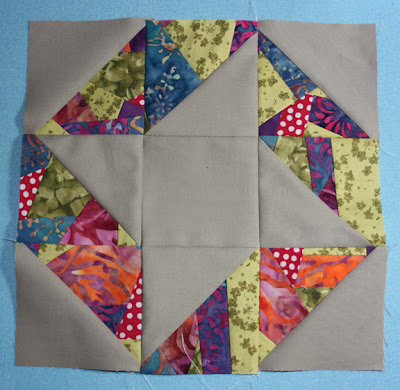This is the second post in my nursery quilt tutorial. For the first post, click
here.
It's time to make the
appliqué blocks!
You'll see several tips scattered throughout this section. Let's just say that most of them were born of mistakes I made during my first few appliqué projects!
Making the Appliqué
Blocks
1. Print out the templates (click for the
lion,
giraffe and
elephant patterns) and trace onto the paper
side of fusible web. Cut out around each animal shape, leaving approximately
1/2'' past the drawn line.
Pair up your fabrics for each animal block. Once
you've decided what fabric to use for which animal parts, follow the
manufacturer's directions and press fusible web to the back of the appropriate
fabrics.
Tip: Position your animal
shapes carefully to keep (or avoid) certain elements in the fabric. Cut out
each shape on the drawn line.
2. Fold and lightly press each 8'' background square in half
in both directions to find the center point. Use this point as a guide for
centering the animals on the background square.
3. Remove the paper backing from the fusible web. Tip: I sometimes have trouble with this, so whenever
possible, I choose an initial separation point that will be covered by another
appliqué element.
4. Press the shapes to the background square. I prefer to
press one shape at a time, beginning with the base layer (so, first the lion
body, then the mane, and then the face).
5. If desired, press lightweight interfacing to the back
of the square to serve as a stabilizer, making sure it goes beyond the area the appliqué covers. Tip: Even though I use fusible interfacing, I still pin
the corners because I've had the interfacing ''unstick'' before, which just
makes a mess when it doubles up as you're stitching.
6. Choose a coordinating or contrasting thread color (or
colors!) for zig zag stitching the appliqués in place. I chose turquoise
because I knew it would tie in nicely with my sashing fabric.
Choose a stitch
length and width. Tip: Audition the
stitch size on scraps first. I like to choose a happy medium because it's more
forgiving of my stitching errors. Stitch the animal pieces on each block and
press.
If you used a stabilizer, trim the interfacing around the stitching.
Assembling the Quilt
Note: My sample only has two blocks rows and three sashing
rows because I'm making a smaller wall hanging. You will have four block rows
and five sashing rows.
1. Lay out the blocks in four rows of three blocks
each, alternating the pieced and appliqué blocks in each row. Add four 2-1/2''
x 8'' sashing strips to each row, alternating with the blocks. Sew the sashing
strips and blocks together in each row to make a block row.
2. Lay out three 2-1/2'' x 8'' sashing strips alternating
with four 2-1/2'' sashing squares to make a sashing row. Make a total of five
sashing rows.
3. Lay out the block rows alternating with the sashing rows
and sew together to complete the quilt top.
I'm showing you my finished quilt here rather than my sample so you can see the layout for 12 blocks.
Finishing the Quilt
Layer the quilt top, batting and backing and quilt as
desired. Use the four 2-1/2'' x 42'' binding strips to bind the quilt.
Pictures of my finished wall hanging to come later...I need to get some backing fabric to finish it!
In the meantime, I've joined the talented quilters at
15 Minutes Play in a 12-week Color Challenge. I'll be sharing my blocks here as well each week, as well as some other things I'm working on, and adding photos of my finished quilts to this blog's gallery page.






















































